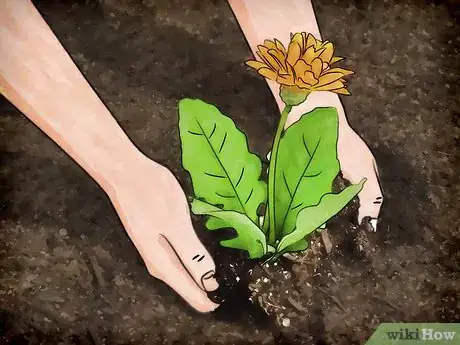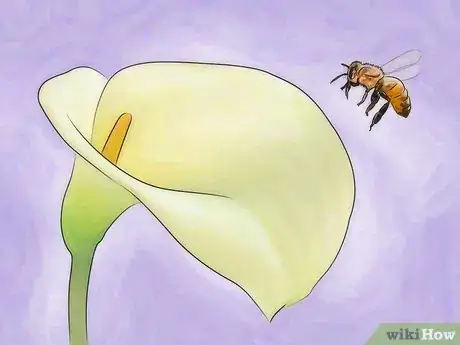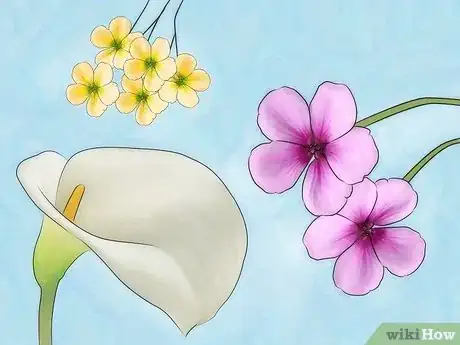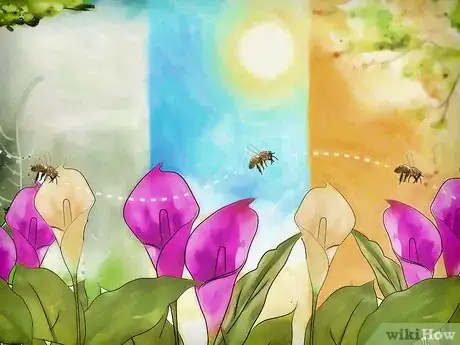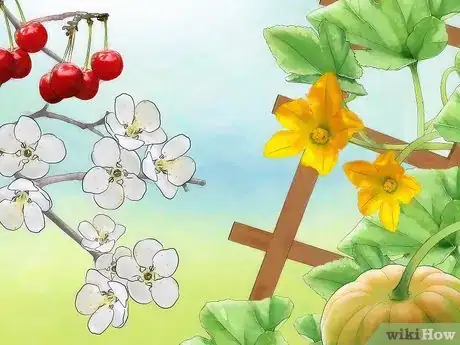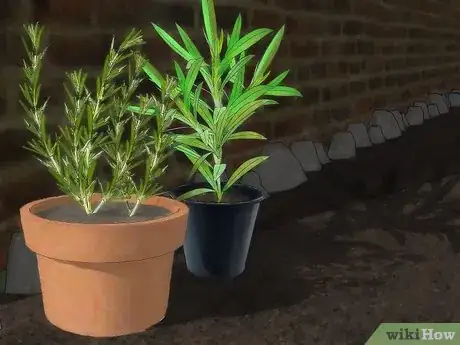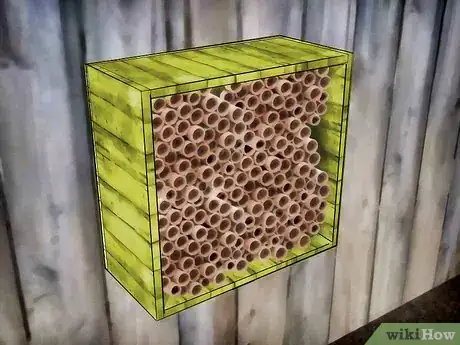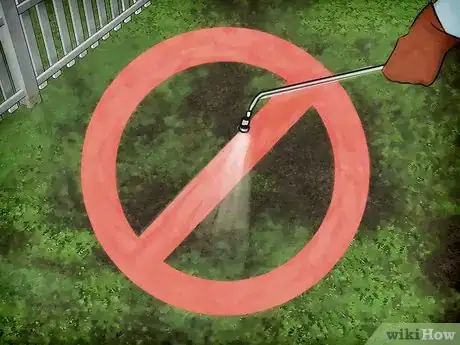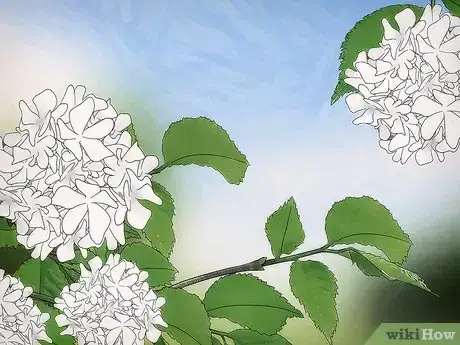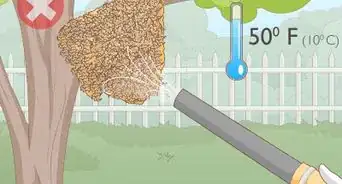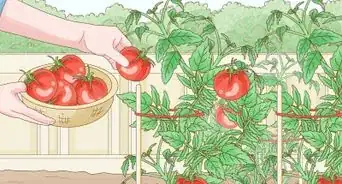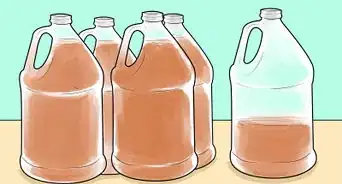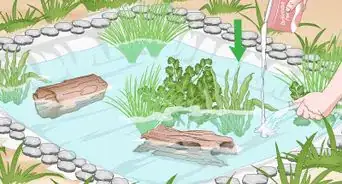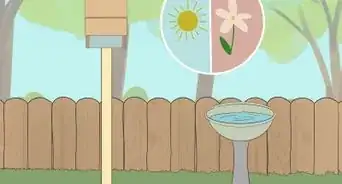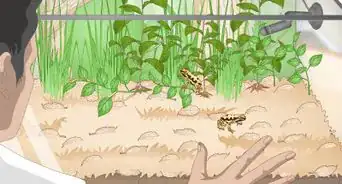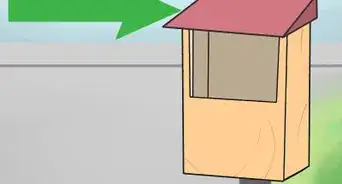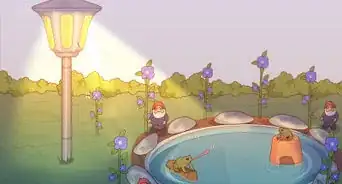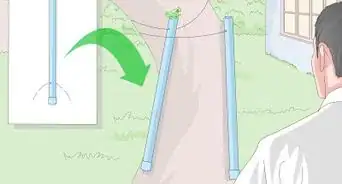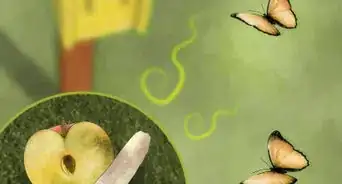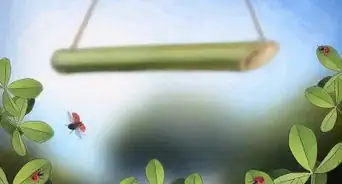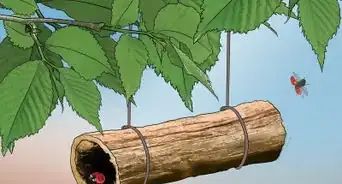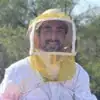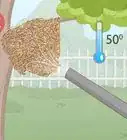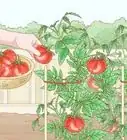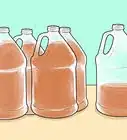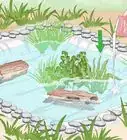This article was co-authored by Steve Downs. Steve Downs is a Live Honey Bee Removal Specialist, Honey bee Preservationist, and the Owner of Beecasso Live Bee Removal Inc, a licensed bee removal and relocation business based in the Los Angeles, California metro area. Steve has over 20 years of humane bee capturing and bee removal experience for both commercial and residential locations. Working with beekeepers, agriculturalists, and bee hobbyists, Steve sets up bee hives throughout the Los Angeles area and promotes the survival of bees. He has a passion for honeybee preservation and has created his own Beecasso sanctuary where rescued bee hives are relocated and preserved.
wikiHow marks an article as reader-approved once it receives enough positive feedback. This article received 14 testimonials and 84% of readers who voted found it helpful, earning it our reader-approved status.
This article has been viewed 349,345 times.
Honey bees help your garden to become more fruitful and beautiful then ever before. Having bees buzzing around to act as pollinators brings life to the yard and makes flowers and other plants lush and abundant. You can attract bees by planting wildflowers, fruits, native plants, vegetables and sunflowers; letting your yard grow a little wild; and providing water and shelter for bees. Read on to learn more about how to attract honey bees.
Steps
Planting Bee-Friendly Flowers
-
1Plant flowers native to your area. Bees evolved with wildflowers, and the bees in your area will respond best to the flowers they "grew up with," so to speak. What flowers are native to your area? If you're not sure, go to a local gardening store and ask for a native wildflower mix, or do some research online before ordering seeds. If you don't want your garden to be completely wild, choose at least a few species that will complement the rest of your garden and attract bees.
- The more wildflowers you plant, the more bees you'll attract, and the better your garden will grow. Planting wildflowers is beneficial in more ways than one!
- Aim to plant a great diversity of flowers with a range of shapes and textures, not just one or two types. The more diverse your garden is, the better it will support different bee species as well as other beneficial insects and wildlife.
-
2Plant flowers with single petals. Flowers with a single row of petals, rather than flowers with more than one row, are more attractive to bees. Single-petaled flowers have more pollen than other flowers, so they provide a little more food for hungry honey bees. It's also easier for bees to reach the pollen when there is only one row of petals to crawl across.[1] Here are a few flowers bees particularly love:
- Asters
- Calliopsis
- Clover
- Cosmos
- Crocuses
- Dahlias
- Foxglove
- Geraniums
- Hollyhocks
- Hyacinth
- Marigolds
- Poppies
- Roses
- Snowdrops
- Sunflowers
- Zinnias
Advertisement -
3Plant yellow, white, blue and purple flowers. These colors attract bees more than pinks, oranges and reds do. Your garden doesn't have to be exclusively yellow, blue and purple, but having a good amount of flowers with these hues will keep the bees buzzing in your yard.
-
4Plant flowers that bloom in sequence. If all of your flowers bloom at the same time, the bees will have a feast, then run out of food before the summer's end. Plant a variety of flowers that will bloom throughout the spring, summer, and into the fall to keep the bees in your neighborhood fed and happy.
-
5Plant flowering vegetable and fruit plants. Berries, melons, squash, cucumbers, and fruit trees, especially cherry trees, all produce fragrant flowers and fruit that are attractive to bees. Bees are beneficial to these plants, so providing them in your garden will be a treat for you both.[2] Bees adore these fruits and vegetables:
- Blackberries
- Cantaloupe
- Cucumbers
- Gourds
- Cherry trees
- Peppers
- Pumpkins
- Squash
- Strawberries
- Watermelons
-
6Plant herbs that attract bees. If you have space for a little herb garden, that's another great way to attract bees. Mints attract certain types of bees, as do sage, rosemary, thyme, bee balm, and a number of other herbs. Here's a list of herbs that bees love, for your reference:
- Bee Balm
- Borage
- Catnip
- Coriander/Cilantro
- Fennel
- Lavender
- Mints
- Rosemary
- Sage
- Thyme
Making Your Yard a Bee Haven
-
1Let it get a little wild. If your grass is close-clipped, every stick has been picked up, and there's not a muddy spot to be found, bees will have trouble finding a home in your yard, no matter how many wildflowers you plant. Bees are wild creatures who need a wild habitat to thrive. If you want them to take up residence in your yard, do the following:
- Allow for some open, meadow-like spaces in your yard and garden.
- Leave an area un-mowed and let wild clover grow. If you don't have clover in your yard, scatter some white clover seed over the area in the fall.
- Leave a small brush pile and some leaves lying where they fell. Bees will use them to make a home.
- Leave patches of exposed dirt that turn to mud when it rains. Some bees live underground and will thank you for access to the mud they need.
-
2Make a bee bath. Bees have trouble using birdbaths, because they aren't able to land in deep water. They need an island to land on so they can walk to the edge and take a drink or a bath without drowning. To make a bee bath, take a wide, shallow dish or tray and line the edges with flat rocks. Pour water over the rocks and into the bottom of the tray. Place it in your garden near the flowers that attract the most bees. The bees will be able to land on the rocks and access the water.
-
3Provide a bee shelter. Rotting vegetation and stumps are great shelters for bees. More and more backyard gardeners are installing hives and other bee shelters to provide nesting spots for bees. If you're serious about attracting bees to your yard and helping them thrive, this option might be something to consider. You can start by building a small bee "house" using the following method:
- Take a small wooden box and paint it a bright color, preferably white, yellow, bright blue or purple. Use organic paint so the bees won't get sick.[3]
- Layer the box with nesting tubes, standing them upright. You can buy them from a garden store or make your own by rolling brown craft paper around a pencil, pinching off the end and holding it together with tape, leaving the ends open.[4] Fill the box to the top with these tubes standing upright, so that the exposed holes are open for the bees to climb in.
- Turn the box on its side. Be sure you've used enough tubes so that they don't slip out when you move the box. Hang from a tree or a post at eye level in an area sheltered from rain.
- Dig up an area of the ground nearby to expose dirt and clay the bees can use to build their nest.[5]
-
4Stop using pesticides of any kind. Bees are susceptible to pesticides and other chemicals sprayed and used in gardens. Aim to have a pesticide-free garden and use pest-ridding remedies that are natural and not reliant on chemicals. If you do spray plants, only do so after dusk, when pollinators are least active, avoid using chemicals known to harm bees.
- Integrated pest management combines many different methods of pest control to reduce the need to use pesticides. Research integrated pest management methods to find the right system for your yard.
-
5Plant flowering trees to attract bees. Trees provide large amounts of food for bees when they are in full bloom. They are also a beautiful addition to the landscape.[6] If you are in North America, some good trees include:
- American Basswood
- Southern Magnolia
- Sourwood
- Redbud
- Crabapple
- Locust
- Serviceberry
- Tulip Trees
Expert Q&A
-
QuestionCan I farm my bees if I don't have a beehive?
 Andrew Carberry, MPHAndrew Carberry is a Food Systems Expert and the Senior Program Associate at the Wallace Centere at Winrock International in Little Rock, Arkansas. He has worked in food systems since 2008 and has experience working on farm-to-school projects, food safety programs, and working with local and state coalitions in Arkansas. He is a graduate of the College of William and Mary and holds a Masters degree in public health and nutrition from the University of Tennessee.
Andrew Carberry, MPHAndrew Carberry is a Food Systems Expert and the Senior Program Associate at the Wallace Centere at Winrock International in Little Rock, Arkansas. He has worked in food systems since 2008 and has experience working on farm-to-school projects, food safety programs, and working with local and state coalitions in Arkansas. He is a graduate of the College of William and Mary and holds a Masters degree in public health and nutrition from the University of Tennessee.
Food Systems Expert If you would like to farm the bees for honey, then yes, you would need a beehive. If you simply want to bring bees into the area, you do not need a hive.
If you would like to farm the bees for honey, then yes, you would need a beehive. If you simply want to bring bees into the area, you do not need a hive. -
QuestionWhat is the best sweetener to attract bees?
 Andrew Carberry, MPHAndrew Carberry is a Food Systems Expert and the Senior Program Associate at the Wallace Centere at Winrock International in Little Rock, Arkansas. He has worked in food systems since 2008 and has experience working on farm-to-school projects, food safety programs, and working with local and state coalitions in Arkansas. He is a graduate of the College of William and Mary and holds a Masters degree in public health and nutrition from the University of Tennessee.
Andrew Carberry, MPHAndrew Carberry is a Food Systems Expert and the Senior Program Associate at the Wallace Centere at Winrock International in Little Rock, Arkansas. He has worked in food systems since 2008 and has experience working on farm-to-school projects, food safety programs, and working with local and state coalitions in Arkansas. He is a graduate of the College of William and Mary and holds a Masters degree in public health and nutrition from the University of Tennessee.
Food Systems Expert Natural pollen is the best way to attract bees. American Basswood is said to be one of the most attractive trees for bees.
Natural pollen is the best way to attract bees. American Basswood is said to be one of the most attractive trees for bees. -
QuestionWhat scents can I use to lure honeybees to my yard?
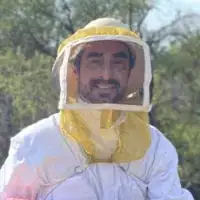 Steve DownsSteve Downs is a Live Honey Bee Removal Specialist, Honey bee Preservationist, and the Owner of Beecasso Live Bee Removal Inc, a licensed bee removal and relocation business based in the Los Angeles, California metro area. Steve has over 20 years of humane bee capturing and bee removal experience for both commercial and residential locations. Working with beekeepers, agriculturalists, and bee hobbyists, Steve sets up bee hives throughout the Los Angeles area and promotes the survival of bees. He has a passion for honeybee preservation and has created his own Beecasso sanctuary where rescued bee hives are relocated and preserved.
Steve DownsSteve Downs is a Live Honey Bee Removal Specialist, Honey bee Preservationist, and the Owner of Beecasso Live Bee Removal Inc, a licensed bee removal and relocation business based in the Los Angeles, California metro area. Steve has over 20 years of humane bee capturing and bee removal experience for both commercial and residential locations. Working with beekeepers, agriculturalists, and bee hobbyists, Steve sets up bee hives throughout the Los Angeles area and promotes the survival of bees. He has a passion for honeybee preservation and has created his own Beecasso sanctuary where rescued bee hives are relocated and preserved.
Live Bee Removal Specialist Try placing a few drops of lemongrass in an area you would like honey bees to visit.
Try placing a few drops of lemongrass in an area you would like honey bees to visit.
Warnings
- If you or a family member has a bee allergy, be extremely careful. Consider not making any efforts to attract bees or have the allergic person take extra precautions such as wearing shoes, not going near bee-attracting bushes or plants and carrying an epi-pen––this is doable provided the allergic person behaves responsibly.⧼thumbs_response⧽
- Do not harass bees at their nest.⧼thumbs_response⧽
- Once there are more bees present on your property, be more careful about your movements, especially walking barefoot or walking among the flowers.⧼thumbs_response⧽
- Avoid leaving sugar water, syrup or confectioners sugar out for bee feeding. Bees need healthy sources of food, not manufactured sweetness.⧼thumbs_response⧽
Things You'll Need
- Appropriate plants
- Water
- Nesting places (optional)
References
- ↑ http://www.gardeners.com/Attracting-Beneficial-Bees/5024,default,pg.html
- ↑ http://www.honeybeesuite.com/how-to-attract-bees-to-your-garden/
- ↑ http://www.davidsuzuki.org/what-you-can-do/food-and-our-planet/create-a-bee-friendly-garden/
- ↑ http://www.davidsuzuki.org/what-you-can-do/food-and-our-planet/create-a-bee-friendly-garden
- ↑ http://www.davidsuzuki.org/what-you-can-do/food-and-our-planet/create-a-bee-friendly-garden/
- ↑ https://www.thoughtco.com/best-north-american-trees-for-bees-1968106
About This Article
To attract honey bees, start by planting single-petal flowers with yellow, white, blue, and purple blooms in your yard. You can also plant bee-friendly herbs like rosemary, lavender, sage, and thyme. Next, stop using pesticides on your lawn and let the foliage grow a little wild to provide shelter for the bees. Rotting vegetation and stumps can also make great shelters for bees, or you can build your own shelter out of wood, cardboard tubes, and brightly-colored paint. For more tips on building a bee shelter, read on!
